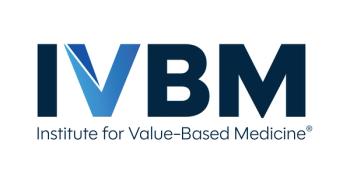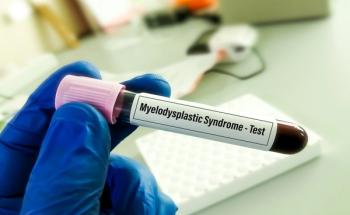
Selective Venous Sampling May Improve Liquid Biopsy Accuracy
The sensitivity and specificity of liquid biopsy might be improved through selective venous sampling according to an article in press in The Journal of Vascular and Interventional Radiology.
The sensitivity and specificity of liquid biopsy might be improved through selective venous sampling, a technique long used in hormone assays and diagnosis of some neuroendocrine tumors, according to an article in press published online in The Journal of Vascular and Interventional Radiology.
Liquid biopsy via peripheral blood draw minimizes the invasiveness of diagnosis, depending on the analysis of biological markers like circulating tumor DNA (ctDNA), circulating tumor cells (CTCs), and others to detect cancer-related mutations with diagnostic, prognostic, and therapeutic significance. It can help diagnose early cancer, detect minimal residual disease, and indicate recurrence or metastasis while reducing the number of tissue biopsies a patient undergoes.
One potential pitfall in the clinical application of liquid biopsy is the scarcity of those markers in peripheral blood samples. Possible solutions to this issue include taking a larger blood sample and pricey, experimental, technology-based enrichment methods, but these can pose challenges when put into practice. The study authors suggest selective venous sampling as a more feasible alternative.
Selective venous sampling involves catheterization via peripheral veins to gain access to all districts in the body rather than just the blood drawn from a peripheral vein. The potential benefit is avoiding the dilution of biomarkers that can occur with sampling blood from peripheral veins, which translates to the collection of larger amounts of those biomarkers.
The review includes 3 cases where the method was used successfully ahead of tissue biopsy. In each case, selective venous samples were compared with peripheral samples from an arm vein.
The first case included a 74-year-old asymptomatic female with no noteworthy family history who had left supraclavicular and laterocervical adenopathy and raised carcinoembryonic antigen and cancer antigen. In this case, 2.15 ng/μl of fragmented DNA and the KRAS gene mutation was identified in the superior vena cava, 1.75 ng/μl in the inferior vena cava, and 1.55 ng/μl in the peripheral blood sample. The superior vena cava showed 3 CTCs, whereas the other 2 sample types showed none. She was diagnosed with adenocarcinoma of pulmonary origin after a histological examination.
In the second case, a 72-year-old male patient with a suspicious nevus on the upper third of his left arm that was suspected to be melanoma had liquid biopsies taken from the left subclavian vein and from a peripheral blood sample taken at the same time. The selective venous sample showed 1.5 ng/μl of fragmented DNA with the NRAS gene mutation, which is related to melanoma. The peripheral blood sample showed 0.6 ng/μl of DNA and did not show any mutations. Superficially spreading melanoma and the gene mutation were confirmed following resection and tissue-based biopsy.
In a third case, a 72-year old man with a family history of prostate cancer had PSA levels of 4.55 ng/ml and a prostate image reporting and a PI-RADS score of 4. A peripheral vein sample demonstrated 0.69 ng/μl of DNA, a selective venous sample from the right hypogastric vein showed 0.50 ng/μl of DNA, and a sample from the left hypogastric vein showed 0.62 ng/μl of DNA and a HNF-1A gene mutation. The right hypogastric vein had 6 CTCs, the left hypogastric vein sample had 4, and the peripheral blood had 5. A percutaneous biopsy led to radical prostatectomy on prostate adenocarcinoma.
“The cases reported here appear to support the possibility of improving the diagnostic accuracy of liquid biopsy thanks to selective venous sampling, which theoretically captures a higher concentration of ctDNA and a larger number of CTCs than peripheral blood sampling,” the authors concluded. It is also a method already in use in several disease settings, making it a relatively intuitive step to take as liquid biopsies are utilized by clinicians.
They note that the findings regard current liquid biopsy technology, and that biomarker analysis is continually evolving. Eventually, there may not be a discrepancy between peripheral and selective venous sampling, they said.
Reference
Damascelli B, Tichà V, Repetti E, Dorji T. Beyond standard practice in liquid biopsy: selective venous sampling. Published online February 20, 2021. J Vasc Interv Radiol. doi:10.1016/j.jvir.2021.02.010
Newsletter
Stay ahead of policy, cost, and value—subscribe to AJMC for expert insights at the intersection of clinical care and health economics.






























































